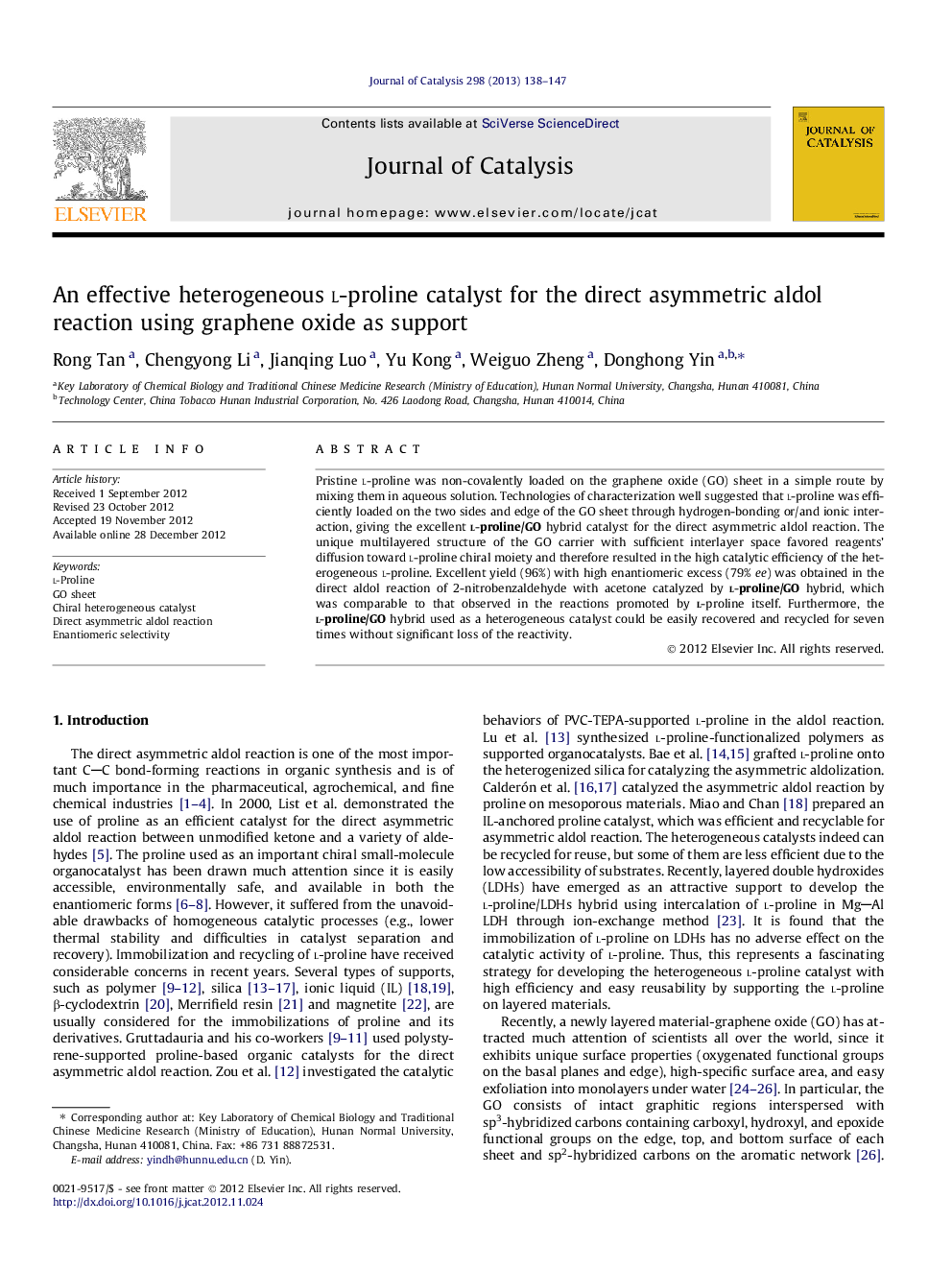| Article ID | Journal | Published Year | Pages | File Type |
|---|---|---|---|---|
| 61316 | Journal of Catalysis | 2013 | 10 Pages |
Pristine l-proline was non-covalently loaded on the graphene oxide (GO) sheet in a simple route by mixing them in aqueous solution. Technologies of characterization well suggested that l-proline was efficiently loaded on the two sides and edge of the GO sheet through hydrogen-bonding or/and ionic interaction, giving the excellent l-proline/GO hybrid catalyst for the direct asymmetric aldol reaction. The unique multilayered structure of the GO carrier with sufficient interlayer space favored reagents’ diffusion toward l-proline chiral moiety and therefore resulted in the high catalytic efficiency of the heterogeneous l-proline. Excellent yield (96%) with high enantiomeric excess (79% ee) was obtained in the direct aldol reaction of 2-nitrobenzaldehyde with acetone catalyzed by l-proline/GO hybrid, which was comparable to that observed in the reactions promoted by l-proline itself. Furthermore, the l-proline/GO hybrid used as a heterogeneous catalyst could be easily recovered and recycled for seven times without significant loss of the reactivity.
Graphical abstractA novel heterogeneous l-proline/graphene oxide hybrid was prepared by non-covalent intercalation of l-proline in GO material and has proved to be an analogous homogeneous catalyst for the direct asymmetric aldol reaction, which exhibited high efficiency, as well as easy reusability in the aldol reaction.Figure optionsDownload full-size imageDownload high-quality image (60 K)Download as PowerPoint slideHighlights► A novel class of layered l-proline/GO hybrid was obtained in a simple manner. ► l-proline was loaded on the basal planes and edge of GO through non-covalent bond. ► 96% Yield of the aldol product can be obtained with up to 93:7 dr’s and 92% ee. ► The catalyst was easily recovered and could be reused for several times.
